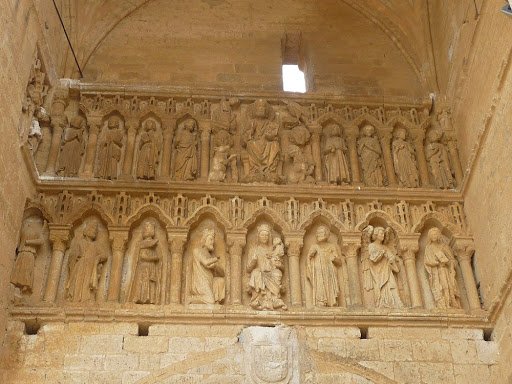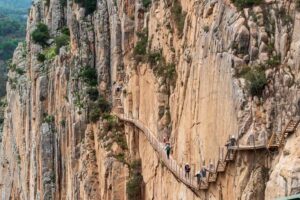The Church of Santa María la Blanca in Villalcázar de Sirga (Palencia), on the itinerary of the French Camino de Santiago, still also called Santa María de Lito (because the latter was the name of the town until the XNUMXth century), is a temple-fortress begun to be built at the end of the XNUMXth century, and finished in the XNUMXth century, erected by the Knights Templars, and that our Travel agency of the Camino de Santiago It is considered one of the most important religious centers on the Camino de Santiago in Castilla, out of a total of 28 parcels that the Order of the Temple had.
The name of Villalcázar comes from two words “villa” (fifth, farm) plus the Arabic quars (palace or fortress), Sirga refers to what was called the French Way, as well as, it was known as Villasirga .
The Church of Santa María la Blanca was a sanctuary for the devotion of Mary, Mother of Jesus Christ, which had a time of great splendor between the XNUMXth and XNUMXth centuries, due to the protection of the Crown of Castile, among which were the kings Alfonso X the Wise and his son Sancho IV. Subsequently, the importance of the temple declined, until it was “reborn” again thanks to the impulse of the pilgrimage to Santiago de Compostela. Fruit of the close relationship of the monarchs, were the Songs of Santa Maria, written by King Alfonso, in which twelve miracles of the White Virgin (Virgen de las Cantigas) are recounted, as well as the numerous privileges granted for their maintenance and as a focus of cultural and religious development.
Due to the earthquake originating in Lisbon (1715), part of the temple had to be restructured, such as the main facade, which had to be covered.
Architecturally, we find a Romanesque transition temple, with a Latin cross plan, three naves covered by a ribbed vault and a double transept. The most important thing in the Church is the fantastic cover of the south door, as well as the Chapel of Santiago and the Altarpiece.

The main portal of the Church of Santa María la Blanca consists of five archivolts, with sculptures of religious motifs (angels, saints, musicians, etc.). Next to it, there is a smaller side portal that gives access to the chapel of Santiago. Just above the portal, there are two spectacular friezes (upper and lower). The upper frieze shows us a “Christ in Majesty”, surrounded by the “Tetramorphs (4 Evangelists)”, as well as part of the apostles. In the lower frieze, we can see scenes of the Adoration of the Magi, on the left, and of the Annunciation to Mary, by the Archangel Saint Michael.
In the Main Altarpiece, made in the XNUMXth century, the influence of Pedro Berrugete is noticeable. In its central part we find, in the Main Chapel, the figure of the White Virgin, a crucified Christ and a sculpture of Saint John, all from the XNUMXth century.
The Chapel of Santiago (XNUMXth century), belonging to the Order of Chivalry of the same name, is illuminated by a beautiful rose window. The stone sculpture of the Virgen de las Cantigas (Virgin of Villasirga-poetic inspiration of Alfonso X), for its famous Cantigas, presides over the room. This chapel houses the Gothic tombs (XIII century), of the Infante Don Felipe, son of Fernando III el Santo and Doña Beatriz de Suavia, as well as that of his second wife Doña Leonor Ruiz De Castro y Pimentel. They stand out for their rich polychromy and decorative richness, with scenes surrounding the funeral of the aforementioned deceased.
The church of Santa María la Blanca is a must for pilgrims who make the French Way between the historic cities of Fromista, which has one of the jewels of the Spanish Romanesque (Church of San Martín) and Carrión de los Condes, another city with works of extraordinary artistic value, such as the Church of Santiago. Conversely, if you start Camino de Santiago organized from Sarria You will miss this Templar temple-fortress, but you can redeem yourself with the greatest jewel of the entire Camino de Santiago, the Cathedral of Santiago in its purest and recently restored state.









